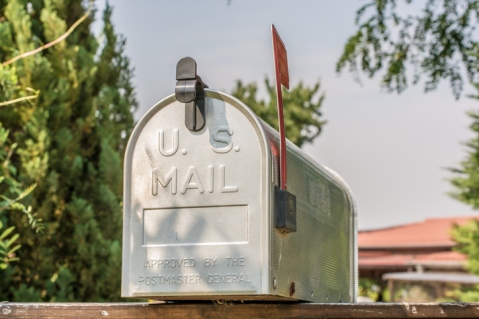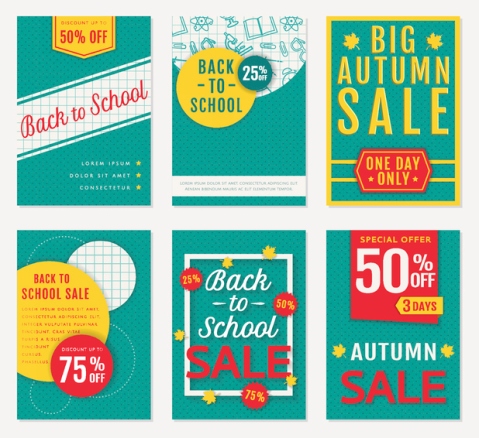5 Ways to Outshine the Competition with Die-Cut Signs
Die-cut signs offer a great way to elevate your business’s visibility and make a lasting impression. Whether promoting products or services, announcing events, or enhancing your brand’s presence, die-cut signs leave a lasting impression.
Die-cutting is a broad term that refers to a process in which you use a machine to mass-produce cut-out shapes. This saves time and guarantees professional, consistent results every time without using scissors, stencils, or a craft knife.
The five tips below will help you use die-cut signs to stand out and leave a lasting impression.
5 Ways to Outshine the Competition with Die-Cut Signs
1. Material Matters
Die-cut signs can be made from various materials, including plastic, metal, and wood.
The material you choose will depend on the look you’re going for and the environment your signs will be displayed in.
2. Select an Eye-Catching Die-Cut
The die-cut shape of your sign offers boundless creative opportunities.
You can choose a simple shape, such as a rectangle or a circle, or get more elaborate with a custom die-cut. Here are some ideas to inspire you:
- Your logo or other iconic images, e.g., A cut-out of a mermaid in a Starbucks
- Silhouettes of your products or services, e.g., a cupcake for a bakery or an airplane for a travel agency.
- A shape that evokes your values, e.g., a leaf-shaped sign for an eco-friendly product.
A company that does this well is Starbucks. Their stores often have signage replicating the green and white round mermaid logo on their cups and packaging.
3. Find the Perfect Printing Method
Die-cut signs can be printed in various ways, including offset, digital, and screen printing.
The printing method you choose will depend on your budget and the look you’re going for.
4. Keep Your Text Clear and Concise
Brevity will ensure that your message on your die-cut is easy to read and understand.
Grab the attention of prospective customers quickly with strong words that prompt a call to action.
5. Use High-Quality Materials
Investing in durable materials ensures that your die-cut signs withstand the test of time, making a lasting impression for years to come.
Following these tips, you can create die-cut signs to help your business stand out and attract new customers.
Ready to make your business shine? Visit us online or come by our shop to try this creative marketing method!
The Why, What, and How of a Good Brand: Don’t Miss These Tips and Tricks
A brand is the spirit and soul of your company. It makes your company recognizable, trustworthy, and loved by customers. A brand built up well is one of your company’s most valuable assets!
59% of consumers prefer buying their products from familiar brands. That’s why crafting a brand is vital, considering many different elements of what you want your company’s brand to be! Here are some things you should consider.
5 Tips for Creating an Effective Brand
1. Identify Your Audience and Research Competition
One of the first steps in creating your company’s brand should be completing market research.
Identifying your company’s target audience will help you focus on communicating to them how your company’s products or services will meet their needs and values.
It’s also important to scope out how the competitors in your company’s field compare to what your business has to offer. When marketing your brand, consider emphasizing what makes your company unique to stand out from competitors.
2. Design the Visual Aspect of Your Brand
Using a signature color can increase a customer’s brand recognition by 80%.
Choosing a color or two that works for your company and keeping it consistent between your brand’s packaging, logo, and any other print materials will create a strong association in your customer’s minds.
A consistent font or typography style can also help create a cohesive and professional feel for your brand.
3. Create a Personality for Your Brand
One of the more finite details you might not have considered is the language your brand uses in its signage, advertisements, and other marketing.
Choosing a “voice” for your brand will create consistency and make your branding more effective. For example, if you’re trying to create a classy, high-end feel for your brand, consider using more formal language; if your target audience is young adults, consider using more conversational vocabulary.
Remember, your company slogan should also reflect your brand’s personality to your customers.
If your company has social media accounts, create posts that reflect the personality that your brand is going for and reply to posts mentioning your company to connect with customers and build familiarity and trust with them.
4. Consistency is Key for Your Brand
Consumers will agree that the strongest kind of brand is a consistent brand.
The brands that have earned a loyal customer following over the years are the ones that integrate their brand’s personality and key elements seamlessly throughout their entire company.
One of the easiest ways to do this is by creating a style guide for your entire company. A style guide is like the rulebook for your brand, and every company department should have it. This practice ensures that font, tone of voice, and color shades remain consistent between direct mail, social media posts, your company website, and more.
5. Never be Afraid to Rebrand
Sometimes, even if your company’s current brand is effective, a rebrand might open up more opportunities for you.
Consider how you might be able to change your company’s name, visual aspects like logo and color scheme, or brand “voice” to better speak to your audience.
But remember to gather feedback from your current customers before making any major brand shifts and try to maintain a degree of brand consistency to prevent instability.
Your brand is an asset that can drive customer preference and contribute to long-term success. Invest the time and effort into crafting a brand that truly represents your company’s values and resonates with your target audience.
Follow these five tips and tricks to unlock your brand’s potential and watch your business soar! If you need help translating your ideas into print, contact us today.
Every Door Direct Mail (EDDM): What It Is and How to Use It
In today’s digital world, most of the messages we receive as consumers come from online platforms. However, leveraging traditional methods of communication is still effective for reaching customers. According to Newswires, direct mail boasts an average response rate between 2.7% and 4.4%, while email only has a 0.6% response rate.
Direct mail remains a relevant and valuable way for your company to advertise itself to the public. But the idea of unknowingly sending your print materials to random addresses might seem daunting.
Thankfully, the United States Postal Service (USPS) offers a program that allows you to send your direct mail specifically to your company’s target demographic, making it even more effective! This feature is called Every Door Direct Mail (EDDM). Read on to learn more about this helpful option!
5 Things to Know About Every Door Direct Mail
1. Individual Address Are Not Required
One of the advantages of EDDM is that you don’t need to know the specific mailing addresses of your recipients.
Instead, EDDM uses zip codes or neighborhoods to send your print materials to every door within that area.
2. Pinpointing Your Target Demographic
EDDM uses official U.S. Census data, allowing you to identify factors such as age, income level, and other demographic statistics for your selected community.
This feature simplifies targeting areas with the highest likelihood of a positive response from your company’s desired audience.
According to CompareCamp, 54% of consumers say they only want to receive direct mail from brands that interest them. EDDM can help ensure that the addresses your mail gets sent to are the customers most likely to be interested in your products or services.
3. Limitations
Before deciding whether EDDM suits your company, it’s essential to consider its limitations.
The program only allows you to send mail to either a mix of residential and business addresses or a list of strictly residential addresses. In other words, if your company’s target demographic is solely businesses, EDDM might not be the most profitable option.
Additionally, remember that to use EDDM, your company must send a minimum of 200 pieces of mail and a maximum of 5,000 per day for each selected ZIP code.
4. How to Start Using EDDM
To begin using EDDM for your direct mail, whether you represent a business or an individual, you’ll need to create a USPS account to start using EDDM for your direct mail.
Once you have an account, use the online tool to select the geographic areas where you’d like your mail sent. Take advantage of the demographic filters to refine your target audience!
5. Design and Send Your Direct Mail
When designing your direct mail pieces, ensure they follow the guidelines and requirements for EDDM.
These specifications can be found on the USPS website. Remember to make your mailpiece eye-catching and easy to read, with a clear call to action. Then drop off your mailpieces at a post office or ship them to one with the correct EDDM facing slip attached.
EDDM is a helpful way to increase the effectiveness of your company’s direct mail and eliminates the need to purchase or create a mailing list.
Consider using EDDM for your next batch of print materials and see how it can impact reaching your target audience! Contact us with questions about utilizing this tool with your next campaign.
Unlocking the Potential of Print Marketing: Strategies for Small Business Success
Print is a tried and true marketing method that holds significant trust and influence among consumers.
With 82% of consumers placing their trust in print advertisements over other sources when making purchasing decisions, it’s clear that print marketing remains a force to be reckoned with. Surprisingly, even the tech-savvy Millennial generation embraces print media – about 33% of them maintain active subscriptions to newspapers and magazines.
Having said that, while print marketing is undoubtedly a powerful tool, it still needs to be appropriately utilized to see the results that you’re after. If you want to make the most of this print marketing opportunity for your small business, here are two strategies to consider.
Embracing Creative Shapes and Materials
The first thing you should do when designing print marketing collateral as a small business owner involves leveraging every opportunity to think outside the box and make an impression.
Case in point: the shape of your mailers.
Print marketing already has a leg up on other materials like digital because it is tangible, and people can hold it in their hands and pin it up on their refrigerator for later. But if you send out materials in standard shapes, you risk getting lost in the sea of every other piece of mail someone happened to get that day.
Even sending out larger, odd-sized envelopes or pieces in shapes that aren’t perfect squares or rectangles is a great way to stand out and get noticed.
The same is true of experimenting with heavier card stock when printing. Sometimes, feeling different from everything else in someone’s mailbox is all you need to make that first impression people can’t get enough of.
The Power of Personalization in Print
Print marketing is a great way to get consumers’ attention because you’re using it! But you want to lean into targeted, personalized offers whenever possible to keep their attention.
One of the reasons digital marketing is seen as less effective than it could be is that it is inherently cold and impersonal. It’s easy to whip up an email to send to people, but once they realize that the same generic message just went out to thousands of people, they will mostly tune it out. It’s even easier to delete it and never look at it again.
To get started with a personalized campaign, separate your customers into groups based on what you know about them. Dive into the data being created about them daily and see what insights you can learn about them.
What do they like? What do they dislike? What purchases have they recently made, and how can you help them get the most out of them? Can you offer someone value without necessarily expecting something in return? Thinking about these questions and crafting your direct mail collateral based on their answers is a great chance to utilize print to make the most positive, lasting impression possible.
If you’re eager to learn more about utilizing the full power of print marketing for your small business, or if you’d like to discuss your needs with someone in more detail, please don’t hesitate to contact us today.
Getting a Head Start: 11 Print Marketing Ideas for Back-to-School Season
Back-to-school season is a time for parents, students, and educators to prepare for the upcoming school year.
It’s also an excellent opportunity for businesses to capitalize on the spending rush of starting a new academic term.
73% of back-to-school shoppers plan to shop in late July and early August, so it’s not too early to start marketing now. When it comes to promoting your business during back-to-school season, nothing beats print marketing!
11 Great Print Marketing Ideas to Give Your Business a Head Start This School Year
1. Back-to-School Flyers
Create a catchy, eye-catching flyer that targets parents and students with special deals, discounts, or promotions for the back-to-school season.
Have them distributed around local schools and neighborhoods.
2. Bookmarks
Design a unique bookmark to be included in student textbooks or given out as free keepsakes.
Include your logo, contact information, and any relevant offers or discounts for back-to-school shoppers.
3. School Supplies
Brand your line of school supplies with your business logo and colors.
These make great giveaways at local schools or events related to the start of the school year.
4. Posters
Create colorful posters to be hung around schools, libraries, or local businesses in your area.
Feature back-to-school deals and promotions for parents and students to take advantage of.
5. Catalogs
Put together a catalog featuring all the back-to-school products and services you offer.
Have them distributed around local schools and neighborhoods.
6. Special Offers
Send postcards or mailers to local families with special back-to-school deals and discounts.
Include your logo and contact information for added visibility.
7. Stickers
Have custom stickers that feature your business logo, colors, and any relevant offers or promotions for the back-to-school season.
Have them distributed around schools or mail them to local parents and students.
8. Classroom Magazines
Put together classroom magazines filled with back-to-school deals, promotions, and helpful tips for the upcoming school year.
Feature your business logo and contact information on the cover page of each issue.
9. Shopping Lists
Create shopping lists that feature your business’s back-to-school products and services.
Include them in mailers or have them distributed around local schools.
10. Postcards
Send postcards with helpful tips for the upcoming school year to parents and students in your target area.
Feature your logo, contact information, and any relevant offers or discounts that you’re offering for the back-to-school season.
11. Notebooks
Have custom notebooks made up with your business logo and colors.
These can be distributed to local schools or given as free keepsakes during back-to-school events and promotions.
Businesses can give themselves a real head start by taking advantage of the increased spending around back-to-school season.
Use these 11 print marketing ideas to get the message out about your business and engage with parents, students, and educators during this important time of year.
Don’t let the back-to-school rush catch you unprepared! Contact us today to find out how we can help your business capitalize on the excitement of the new school year!
The Evolution of the Business Card: What You Need to Know
The business card has come a long way since its inception centuries ago.
It has become an essential part of every company’s identity. But what is its origin, and why is it relevant in business today?
Where Did Business Cards Come From?
In the 15th century, China introduced “visiting cards.”
Essentially, people carried small cards to showcase their importance. Visiting cards were considered a tool for self-promotion and were utilized to request meetings.
What are Trade Cards?
Trade cards were invented in the 17th century to help people find businesses in major cities where addresses were uncommon.
During the 17th century, people followed a strict code of etiquette when interacting with each other. With the onset of the industrial revolution in the 18th and 19th centuries, this formality began to blur the line between social and trade interactions.
People needed a way to introduce themselves and their businesses, which led to the creation of business cards.
What Were the Most Popular Print Options for Early Business Cards?
The print industry significantly changed in the 18th century, with copperplate engraving losing popularity in favor of the more modern woodcut and letterpress printing.
The 19th century pushed the envelope even further with the introduction of lithographic printing. This process enabled business owners to use multiple color options known as stones on their business cards. This novel print technique permitted a maximum of 15 colored stones per individual business card.
During the 1890s, die-cut cards grew in popularity and were used by wealthy businesses to create attractive, uniquely shaped cards. These businesses also used folding cards, cards with moving parts, and those that revealed secret messages when held up to light to distinguish themselves from others.
What are Some of the Most Popular Trends in Business Cards Today?
Minimalism
One of the most recent trends in business card design is minimalism.
Minimalist designs focus on simplicity and clear messaging, often using a single color or photograph as a focal point.
These cards are often more cost-effective since they require fewer printing and design costs. Additionally, the lack of bulk helps them stand out from the crowd and makes them easier to store in a pocket or briefcase.
QR codes
Another popular business card trend is the use of QR codes.
QR codes are matrix barcodes that can be scanned using a smartphone’s camera, allowing people to quickly access contact details or other information.
They are often integrated into the design of business cards, allowing potential customers to quickly and easily access information without having to write it down. For example, you could include a QR code that directs individuals to your LinkedIn profile.
Unique materials
Finally, even the material used to make business cards has evolved.
While traditional paper remains popular, plastic and metal cards are becoming increasingly trendy for their durability and modern aesthetic look. Plastic cards can be printed with high-quality images and graphics, while metal cards have a luxurious and professional feel.
Although the way business cards are created has changed over time, their purpose remains the same: to provide a tangible representation of who you are and what your business stands for.
Whether a traditional paper card or a modern digital one, your business card should make an impression on potential customers and help them remember your company.
With the right design, materials, and messaging, you can ensure your business card stands out from the crowd – no matter your industry.
Are you looking to create a business card to get your company noticed? Contact our team today to get started!
Complementary Colors: Use These Eye-Catching Combinations in Print
Did you know that 93% of shoppers focus primarily on visual appearance when making a purchase?
This is precisely why colors can be so important when it comes to the way that your print designs impact your audience! Understanding which colors pair together well and which don’t make your printed marketing materials look more professional and appealing.
One concept that’s especially helpful to remember when designing your printed materials is complementary colors. Complementary colors fall directly across from one another on the color wheel.
Using complementary colors creates a defined, vibrant, and bold look for your design. Make sure to choose shades of those colors that flatter one another, and avoid combining too many different pairings of complementary colors within the same print design to prevent a clashing look.
Go ahead and use these complementary color pairings to level up your next print design.
3 Inspiring Complementary Color Combinations
1. Blue and Orange
If you incorporate these colors into your company’s advertising, they might combine to make an excellent experience for your customers.
Blue psychologically evokes feelings of stability, trust, and calm. With this in mind, you could use it to reinforce consumers’ confidence in your brand. Use blue coloring for any guarantees or certification logos on your print materials.
Orange is also a very strategic color that you can use to encourage customer engagement. It symbolizes creativity, enthusiasm, and accomplishment. Just like red, this is one of the more intense colors, so you can use it to emphasize the call-to-action in your print design.
2. Yellow and Purple
These two colors can be flattering when paired together for print designs.
Yellow is a fantastic choice for marketing materials. It commonly creates feelings of positivity, happiness, and fun, which can be used to your company’s advantage. Highlight sale prices with yellow, or use it as your design’s border color or background.
Purple is typically best to use as an accent color in your design so that its darkness doesn’t overtake the rest of the print. It’s still great to include since it’s tied psychologically to feelings of luxury, royalty, and wisdom.
3. Red and Green
While it’s probably best to stick to either deeper shades of these colors or more soft pastel tones unless you’re aiming for a more Christmas-like theme, these two are great options for your print marketing.
The color red provokes feelings of urgency, increases appetite, and encourages action. As one of the boldest and most intense colors on the color wheel, consider using it to draw attention to important parts of your print design, like a call to action or a bubble icon advertising a sale.
On the other hand, the color green typically reminds customers of health, nature, and growth. Consider using green in your print materials if you’re selling a nature or health-related product.
By leveraging these inspiring complementary color combinations, you can elevate the impact of your print designs and make a lasting impression on your target audience.
Do you want to experiment with colors and unleash the full potential of your next print marketing campaign? Contact us today, and we can help you get started.
9 Genius Ideas for Driving Traffic to Your Blog with Print
Direct mail marketing is often part of a bigger picture and longer sales cycle. It’s the most effective way of reaching people in the comfort of their homes and offices, allowing them to pass along the information to others easily.
When it comes to driving traffic to your blog, combining the tangible appeal of print materials with the allure of your digital content can yield remarkable results.
Keep reading for strategies to help entice readers to explore the engaging content you offer.
9 Genius Ideas for Driving Traffic to Your Blog with Print
1. Use Links
Send newsletters with your link on them.
Use a teaser on your printed piece to pique their interest, then follow up with a link to your blog. Create a desire in them to know more about the topics you have written about by giving them glimpses of the information in the newsletter.
2. Grab Attention
Send a postcard with a blog title on it and a statistic that gets people’s attention.
This will encourage people to search online for your information.
3. Expand Reach with Print
Create a printed piece that promotes your blog, such as an insert in a newspaper.
By giving people a little bit of information, such as a teaser, you can connect with them and get them to take the next step of going to your blog on their phone or computer.
4. Catch Their Eye
When you decorate your entrance, hang posters that highlight your blog.
Use teasers and fun tidbits that can be found in your blog. Maybe it’s a statistic or an interesting piece of information.
5. Be Creative
Make sure your headlines are catchy.
People won’t want to visit your site if you are overlooked. Spend time thinking about the headline rather than just using the first one that comes to mind. This is important so that people will be curious and check out more of what you have written.
6. Offer Exclusive Content
Provide coupons or discounts when people go to your blog.
Use a printed piece to introduce them to your latest sales. Then tell them to go to your blog for the rest of the information, then offer them a special deal.
7. Concentrate on Consistency
Coordinate your online message with the direct mail pieces.
If the two are not cohesive, it will confuse the readers, and they won’t read on. They must see the two working together to know they’ve reached the right place.
8. Use QR Codes
A QR code on your printed pieces allows readers to scan them and go directly to your blog.
They are easy for people to use and provide an easy and direct path to where you want the person to go.
9. Provide Free Reports
This is a great way to get people to go online and see what you have to say.
Make sure you pick topics they are interested in that apply to their businesses. Then, you can inform them exactly where to turn for the information using direct mail.
When printing your next project, be sure to contact us.
Using QR Codes in Print Marketing: Engage Your Audience and Measure Results
When it comes to print marketing, you can use dozens of tricks to embellish your designs and grab your customers’ attention.
Some available details, like using embossing for letters or using textured paper, are already promoted by many printing companies. One newer option that you should consider for your next print project is using QR codes.
According to Statista, 75.8 million people in the U.S. with smartphones scanned a QR code in 2021. They are increasingly popular and create more opportunities than you might realize when it comes to your print marketing.
Read on to discover tips for incorporating QR codes into your next print campaign.
5 Ways to Use QR Codes for Print Marketing
1. Get Creative with Color
When you think of a QR code, you probably think of the traditional black design on a white background.
You might not know that QR codes have become much more customizable!
Use your brand’s signature colors, or create your company logo within the design for the code. This will make the QR code pop out from the rest of your print material!
2. Increase Visits to Your Website
One of the best ways to engage with your customers is by sharing information through your website!
But sometimes, sending them to your site in the first place can be difficult. Including a QR code on one of your print marketing ads can intrigue customers into scanning it and visiting your site!
Plus, by printing that QR code on brochures, posters, or stickers, you can showcase your company’s info to a broader audience.
3. Engage Customers with Special Offers
A tried-and-true way to connect with your customers is by offering them special, personalized deals on your products and services.
Put a QR code poster on the door of your store offering a sale price reward for shopping in-person, or print one on a direct mail piece that will lead them to a unique coupon code.
4. Track the Effectiveness of Campaigns
One of the first things you should get set up to make sure you’re making the most of your QR codes is tracking channels using the codes.
An urchin tracking module (UTM) can be applied to any URL, which would be the URL the QR code opens when scanned.
You can use UTMs or other tracking methods to see how many people visit the webpage linked to your URL, specifically by scanning the QR code. In this way, they’re one of the most straightforward ways to measure your print campaigns’ response rate and effectiveness.
5. Use QR Codes to Encourage Reviews
Customer reviews are essential to building your audience’s confidence in your brand!
One creative way to encourage and remind people to add reviews for your company is by creating a QR code with a link to a site where they can add a review and print it on your direct mail.
Otherwise, for an even more immediate connection with existing customers, it could be printed on the bottom of your receipts or included on a special thank-you mail piece after customers make a purchase.
Incorporating QR codes into your print marketing can be a game-changer. Don’t miss out on the endless possibilities they offer! Contact us today, and let’s take your marketing to the next level.
7 Top Tips to Create Customer Loyalty Through the Mailbox
You need to build loyalty and trust with your clients when bringing in business. This will keep them coming back. Doing so isn’t hard, especially when you use direct mail.
When people get mail, they are more likely to find it a secure way to receive information. 54% of consumers worried less about direct mail privacy than digital communications privacy.
Employ the ideas below.
7 Top Tips to Create Customer Loyalty Through the Mailbox
1. Send Exclusive Offers
Make your offers attractive so that clients will want to open your mail.
Tease them with discounts and sales on the front of the envelope or postcard.
If you have a new product that they have been waiting for, this is the time to offer a good deal on it and announce it.
2. Personalize Communication
If you send a letter, a newsletter, or even a postcard, try using their name.
This will capture their attention and make them take notice. They will know that it’s not just junk mail.
3. Consistency Counts
Ensure all the pieces work together.
Use the same tone of voice and similar graphic design so that it causes them to remember you. Don’t make each piece wildly different.
4. Use High-Quality Paper
This sends the message that you care and that you are serious about what you offer.
It shows that you don’t skimp on quality, which will increase trust with your customers.
5. Include a Call to Action
Make sure there’s a call to action so customers know what to do next.
Ask them to call, visit your website, or subscribe to a newsletter. This builds loyalty because it causes them to stay in touch with you. It also makes them feel connected regularly.
6. Send a Thank You
Deliver a note to customers personally in a nice letter on quality paper.
Use their name, their buying history, and something personal if you can. This makes people genuinely feel appreciated. When you send things like this through the mail, it’s trusted more than an email.
7. Lead with Your Logo
Send items in the mail that have your logo on them, whether it’s a pen, stationary, or a magnet.
This works to build loyalty because it reminds them daily of your business, and it creates a feel-good situation. They know you appreciate them when you give them items.
No matter your business, there are ways to keep customers coming back. Building loyalty takes time, so the key is to be consistent and not give up. Keep the content coming.
In fact, it’s five times less expensive to keep existing customers than to attract new ones.
If you have a project that requires printing, please reach out. We are here to help!









